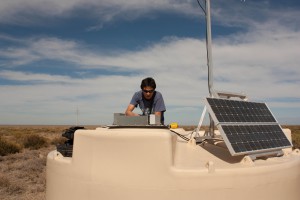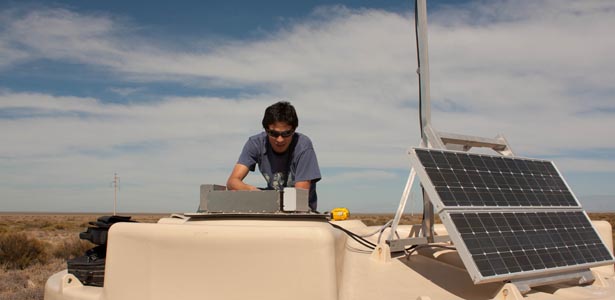
Zigfried Hampel-Arias, 2009-2010, Argentina, working on a detector element of the Pierre Auger Observatory
As a physicist, I study cosmic rays—high-energy particles that zip around the universe. If scientists are lucky, these cosmic rays land on detectors set up on the ground. For my Fulbright grant, I worked at the Pierre Auger Observatory, a detector located in Mendoza, Argentina. By analyzing the information gained from the detector, physicists can better understand the origins and fate of our universe.
My Fulbright research focused on how the observatory was aging and its potential impact on the search for the elusive sources of cosmic rays. Initially, I thought that the project would be fairly straightforward, but that was not to be the case. After consulting with my Argentine colleagues, I realized that I had to write my own computer simulation program to solve the problem. I had to simplify the physics involved and to incorporate only those interactions that were essential to the problem. Another surprise was that I have been able to use the simulation I wrote during my Fulbright for my current doctoral research in physics at the University of Wisconsin-Madison. This was not what I was expecting, but early into my grant period, I realized that unexpected experiences are an integral part of the Fulbright experience.

